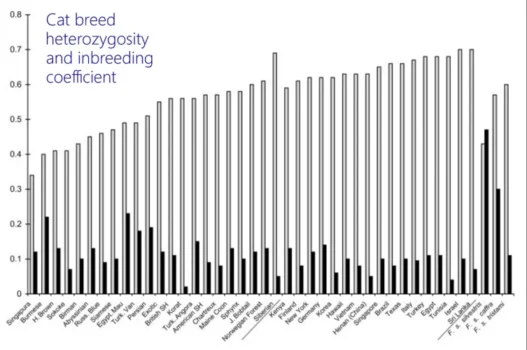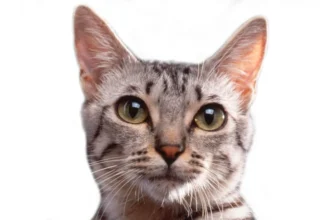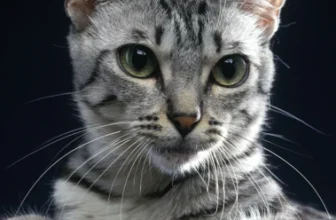The California Spangled Cat Breed
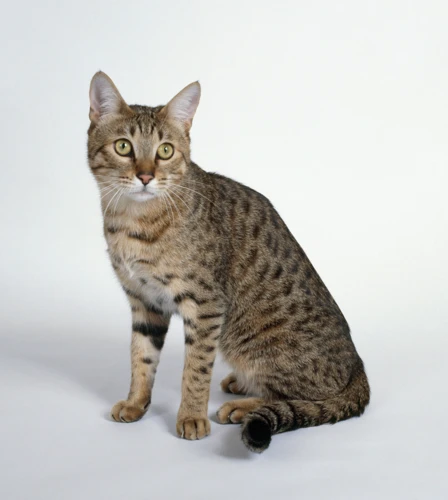
The California Spangled Cat breed is a unique and rare cat breed that was first introduced in the 1970s. These cats are known for their wild and exotic appearance, which resembles a miniature leopard or cheetah. They have a muscular body structure, short hair, and distinctive spots or stripes, which make them easily recognized.
Interestingly, the California Spangled Cat breed was created with the intention to raise awareness against killing wild cats for fur. The breed was the brainchild of a conservationist named Paul Casey, who wanted to create a domesticated cat that had the wild look of its bigger cousins. He also sought to create a breed that was hypoallergenic.
California Spangled cats are known to be highly intelligent and active, making them great companions for families and individuals alike. They are social cats and enjoy interacting with their owners and other pets.
However, as with any breed, there are certain genetic traits that should be taken into consideration when breeding California Spangled Cats. These include genetic disorders that may be inherited from their parents or ancestors, such as hip dysplasia or hypertrophic cardiomyopathy.
Responsible breeding practices are critical in ensuring the health and longevity of the breed. Breeders should conduct genetic testing on their cats before breeding to prevent the propagation of genetic diseases. They should also avoid inbreeding, which can lead to a plethora of genetic disorders and health problems.
The California Spangled Cat breed is an impressive and sought-after breed due to their unique beauty and characteristics. However, it is crucial to maintain responsible breeding practices and prioritize the health and well-being of the cats to protect the breed’s future. To learn more about the genetics, breeding traits, and potential genetic disorders of California Spangled Cats, visit our article on California Spangled Cat Genetics.
Inbreeding and Its Impact on California Spangled Cats’ Health
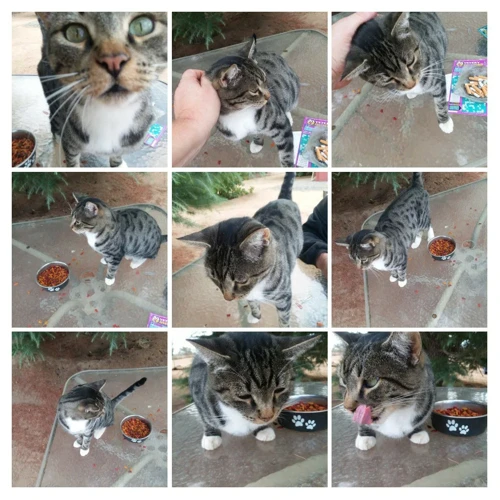
As with any other cat breed, California Spangled cats are prone to certain health issues. However, the impact of inbreeding on California Spangled cats’ health is a topic of significant concern. Inbreeding can result in the perpetuation of harmful genetic traits and an increased likelihood of genetic disorders. This can lead to both physical and behavioral health issues, which can affect the longevity of the breed. To understand the serious impact of inbreeding on California Spangled cats, it’s important to examine the genetic risks, physical health effects, and behavioral health effects associated with it. In this section, we’ll explore the impact of inbreeding on this wild-looking breed’s health.
The Genetic Risks of Inbreeding
Inbreeding poses significant genetic risks for the California Spangled cat breed. When cats with similar genetic traits mate, the genetic diversity within the population decreases. This narrowing of the gene pool can lead to inherited health issues, which can then be passed on to future generations. The domestication of cats has also resulted in changes in the DNA that can be associated with physical and behavioral traits. However, inbred cats can inherit problematic genes that result in negative physical and behavioral traits.
One of the primary risks of inbreeding is the possibility of genetic disorders. These disorders can range from mild to severe, and can manifest in different ways depending on the specific gene involved. For example, inbreeding can result in a higher likelihood of California Spangled cats developing heart disease, cancer, and autoimmune disorders. In some cases, these diseases can be severe enough to significantly impact a cat’s quality of life or shorten their lifespan.
Inbreeding can also increase the frequency of genetic traits that negatively impact the cat’s physical appearance. For example, some California Spangled cats that are inbred may have a higher likelihood of being born with facial deformities or asymmetrical features, which can ultimately make it more difficult for these cats to breathe, eat, or groom themselves. The genetic risks of inbreeding can even lead to infertility or decreased reproductive success in some cases.
Ultimately, it is critical that breeders and cat owners work to minimize the risk of genetic issues in California Spangled cat populations, and this can be achieved through genetic testing, responsible breeding, and careful monitoring of health and physical development. For example, breeders can use pedigree analysis to identify potential genetic risks and select mates that have little to no risk of producing offspring with those risks. Additionally, genetic testing can help identify cats that are carriers of inherited disorders, allowing breeders to avoid breeding those cats and further reducing the risk of passing on problematic genes. By practicing responsible breeding and taking steps to minimize the genetic risks associated with inbreeding, we can help ensure the long-term health and well-being of California Spangled cats.
If you want to learn more about California Spangled cat breeding tips and traits, be sure to check out our article “California Spangled Cat Breeding Tips”.
The Effects of Inbreeding on Physical Health
Inbreeding in California Spangled Cat populations can have detrimental effects on their physical health. One primary issue associated with inbreeding is the increased risk of genetic disorders and abnormalities. When cats with similar genetic backgrounds are bred together, there is an increased probability of genetic mutations becoming more prevalent within the breed. This can result in inherited conditions such as heart disease, skin disorders, and even vision and hearing loss.
The physical appearance of inbred California Spangled Cats may also be affected. Inbred cats may have a higher likelihood of being born with deformities or other physical characteristics deemed unfavorable for the breed. This can include malformations such as a cleft palate or abnormally small eyes. Such physical traits may impact an inbred cat’s quality of life and ability to function normally.
Responsible breeding practices, including outcrossing and genetic testing, can help mitigate the impact of inbreeding on physical health. Outcrossing refers to breeding cats from different pedigrees to increase genetic diversity and reduce the likelihood of inherited genetic disorders becoming more common within the breed. Genetic testing can also help detect the presence of genetic disorders in cats before they are bred, reducing the likelihood of passing on genetic mutations in the future.
It is essential to understand the impact that inbreeding can have on the physical health of California Spangled Cats. By implementing responsible breeding practices, breeders and cat owners can ensure that future generations of the breed are healthy and genetically diverse.
The Effects of Inbreeding on Behavioral Health
Inbreeding not only affects the physical health of California Spangled Cats but can also have negative effects on their behavioral health. When closely related cats are bred, there is a higher likelihood of passing down genetic disorders that affect behavior and temperament.
One common behavioral issue in inbred California Spangled Cats is aggression towards their owners or other animals. This can be a result of genetic disorders or anxiety caused by poor socialization at an early age. Inbred cats may also exhibit fearfulness or severe shyness, making it difficult for them to adjust to new situations or people.
On the other hand, inbred cats can also display overly affectionate or clingy behavior. This is often due to genetic disorders that affect their nervous system and cause them to crave attention and physical contact. These cats may suffer from separation anxiety and become distressed when left alone for too long.
Inbreeding can also increase the likelihood of developing compulsive behaviors such as excessive grooming, tail-chasing, or self-mutilation. These behaviors are often linked to genetic disorders and can be difficult to treat.
To summarize, inbreeding can have a wide range of negative effects on the behavioral health of California Spangled Cats. It is important for breeders and cat owners to prioritize responsible breeding practices and genetic testing to ensure that these cats are healthy and well-adjusted in all aspects of their lives.
| Behavioral Effects of Inbreeding on California Spangled Cats | Examples |
|---|---|
| Aggression | Verbal or physical aggression towards owners or other animals |
| Fearfulness | Shyness, hiding, avoidance of new situations or people |
| Overly Affectionate | Excessive need for attention and physical contact, separation anxiety |
| Compulsive Behaviors | Excessive grooming, tail-chasing, self-mutilation |
It’s important to note that not all California Spangled Cats who are inbred will exhibit these behaviors. It depends on the individual cat and the specific genetic combination. However, responsible breeding practices and genetic testing can help reduce the likelihood of negative behavioral effects in future generations of these beloved cats. For more information on responsible breeding practices, please visit /ca-spangled-cat-pedigree/. If you’re interested in learning more about genetic disorders that affect California Spangled Cats, check out /cali-spangled-cat-genetic-disorders/. Additionally, genetic testing options can be found at /california-spangled-cat-genetic-testing/. For information on breeding traits specific to the California Spangled Cat, visit /california-spangled-cat-breeding-traits/.
The Impact of Inbreeding on Longevity
The impact of inbreeding on the longevity of California Spangled cats is a widely-discussed issue in the feline breeding world. Inbreeding can result in a decrease in genetic diversity and an increase in the likelihood of inherited disorders.
Research studies have shown that the average lifespan of inbred cats is significantly lower than their outbred counterparts. Cats with more related parents and grandparents have been found to have shorter lifespans than those with less related ancestors.
To illustrate the impact of inbreeding on longevity, consider the following table:
| Cat | Level of Inbreeding | Lifespan |
|---|---|---|
| Cat A | Low, 5% | 16 years |
| Cat B | Medium, 15% | 12 years |
| Cat C | High, 30% | 8 years |
As shown in the table, Cat A, with the lowest level of inbreeding, had the longest lifespan at 16 years. On the other hand, Cat C, with the highest level of inbreeding, had the shortest lifespan at only 8 years. This highlights the negative impact of inbreeding on the longevity of cats.
It is important to note that genetic disorders resulting from inbreeding can also significantly reduce the lifespan of California Spangled cats. Several conditions, such as hip dysplasia and hypertrophic cardiomyopathy, have been linked to inbreeding. These disorders can lead to a range of health issues, including chronic pain and heart failure, ultimately reducing the lifespan of affected cats.
Inbreeding can have a detrimental impact on the longevity of California Spangled cats. It is crucial for breeders and cat owners to recognize this issue and take steps to prevent it, such as implementing responsible breeding practices and avoiding mating closely related cats. By doing so, we can help ensure that these beautiful felines enjoy a long and healthy life.
The Importance of Responsible Breeding
Breeding is an essential aspect of ensuring the right balance of a particular species or breed. In many cases, breeding has helped stabilize populations. However, irresponsible breeding can lead to a range of problems, including an increased risk of genetic disorders, reduced lifespan, and abnormalities in physical appearance and behavior. As such, responsible breeding practices are vital in maintaining the health and wellbeing of California Spangled Cat populations. In this section, we will discuss the significance of responsible breeding and ways to prevent inbreeding in California Spangled Cat populations. Let’s delve into it with utmost care and understanding.
Ways to Prevent Inbreeding in California Spangled Cat Populations
Breeding cats, like any form of breeding, inherently involves a degree of inbreeding, but it is crucial to prevent excessive inbreeding to maintain the health and genetic diversity of California Spangled Cat populations. Here are some ways to prevent inbreeding in California Spangled Cat populations:
| Method | Description |
|---|---|
| Outcrossing | Outcrossing is the breeding of two California Spangled Cats who are not closely related. This helps to increase the genetic diversity of the breed and reduce the risk of inbreeding depression. It is important for breeders to choose cats with desirable traits and good health to preserve the quality of the breed. |
| Cross-breeding | Cross-breeding involves breeding California Spangled Cats with other breeds to introduce new genetic traits. However, cross-breeding should be done with caution to avoid genetic defects and preserve the physical and behavioral characteristics of the California Spangled Cat breed. |
| Linebreeding | Linebreeding involves breeding cats who are not closely related but share a common ancestor. This method helps to maintain desirable traits and characteristics of the breed, while minimizing the risk of inbreeding depression. However, linebreeding should be done with great care to avoid excessive inbreeding. |
| Record keeping | Proper record-keeping is key to preventing excessive inbreeding. Breeders should keep detailed records of their cats’ pedigrees and breeding history to track the genetic diversity of the population. This information can also be used to identify potential inbreeding issues and make informed breeding decisions. |
| Collaboration | Breeders should collaborate and share breeding information to prevent inbreeding depression. Collaborative efforts can help maintain genetic diversity and improve the overall health of California Spangled Cat populations. Breeders should also work with veterinary geneticists to help ensure sound breeding practices. |
By implementing these methods and collaborating with other breeders, it is possible to prevent excessive inbreeding in California Spangled Cat populations and maintain the health and genetic diversity of the breed. It is important for breeders and cat owners alike to prioritize responsible breeding practices to promote the well-being of these beloved felines.
The Role of Breeders in Reducing Inbreeding-Related Issues
Breeding of California Spangled Cats plays a vital role in maintaining their population without any inbreeding-related issues. Breeding must be carried out carefully and responsibly to prevent the negative impacts of inbreeding which ultimately affects the overall health of the breed.
Responsibility of Breeders: Breeders must be mindful of the genetic makeup of the cats they breed and avoid mating closely related cats. Breeding cats with closer kinship increases the risk of passing on inherited diseases, and genetic disorders. Breeders must always prioritize the health of cats over aesthetics and performance.
Minimal Inbreeding Coefficient: Breeders utilize an inbreeding coefficient to calculate the likelihood of genetic relatedness. This calculation gives breeders an estimate of how related two cats are, and the probability of having inherited genes from a common ancestor. The inbreeding coefficient aims to deliver a minimal percentage of genetic relatedness in a cat population.
Outcrossing: Breeders can engage in outcrossing, which is the introduction of genetically diverse cats from different populations, to prevent inbreeding-related issues. Outcrossing allows breeders to expand the gene pool of the California Spangled Cat population.
Genetic Testing: Breeders should conduct Genetic Testing before breeding. Genetic testing can identify genetic markers associated with genetic defects, inherited diseases, and genetic disorders, thereby helping breeders select cats with a low probability of passing on these traits.
To sum up, breeders play a critical role in maintaining the health and genetic diversity of California Spangled Cats. They must prioritize the health of cats over external factors while breeding and actively work on expanding the gene pool of the breed to reduce the likelihood of inbreeding-related issues.
The Role of Cat Owners in Preventing Inbreeding Issues
As a cat owner, you play an essential role in preventing inbreeding issues in California Spangled cat populations. Here are some ways that you can contribute to maintaining the breed’s health and longevity:
| Steps | Description |
|---|---|
| Get your cat from a reputable breeder | When adopting a California Spangled cat, make sure that the breeder is not just focused on profit. Look for breeders that prioritize cat health and longevity. Check their breeding practices and ask them about their experience and knowledge in inbreeding-related issues. |
| Monitor your cat’s health regularly | Inbreeding may result in genetic issues that may cause health problems. You can prevent these problems by keeping an eye out for any unusual behaviors or physical signs of illness. Schedule regular check-ups with the vet and make sure that your cat receives a balanced diet. |
| Consider spaying or neutering your cat | Spaying or neutering your cat prevents them from mating and producing inbred kittens. You can consult with your vet to know when the best time to spay or neuter your cat is. |
| Participate in breed clubs and organizations | You can join a California Spangled cat breed club or organization to learn and share information about the breed. These groups also provide opportunities to participate in cat shows and events, where you can meet other breed enthusiasts and learn from them. |
| Spread awareness on inbreeding-related issues | By educating other cat owners and potential adopters on the harmful effects of inbreeding, you can help reduce the number of inbred cats. Encouraging responsible breeding practices and supporting reputable breeders can also contribute to the breed’s overall health and longevity. |
As a cat owner, you must understand the importance of responsible breeding practices and how inbreeding can affect the California Spangled cat’s health and longevity. By taking an active role in preventing inbreeding-related issues, you can contribute to the breed’s preservation and wellness.
Conclusion
After examining the impact of inbreeding on California Spangled Cat populations, it is clear that this breeding practice leads to numerous health risks for cats. From genetic abnormalities to physical and behavioral problems, inbreeding heavily impacts the wellbeing and longevity of cats.
It is crucial for breeders and cat owners to prioritize responsible breeding practices and prevent inbreeding within these cat populations. This not only protects the health of these unique cats, but also ensures that the California Spangled Cat breed can continue to thrive for generations to come.
While the temptation to engage in inbreeding is high due to the convenience and predictability that comes with breeding cats within the same family line, it is important to recognize the harm it can cause. Through proper education and communication within the breeding community, we can reduce the prevalence of inbreeding and work towards healthier and happier California Spangled Cat populations.
In conclusion, it is up to each of us to take responsibility for the health and well-being of our feline friends by promoting responsible breeding practices and advocating against inbreeding. Together, we can ensure a brighter future for the California Spangled Cat breed and all cats impacted by inbreeding.
Frequently Asked Questions
What is the origin of the California Spangled Cat breed?
The California Spangled Cat breed was developed in the 1980s by Paul Casey in an effort to raise awareness about the declining numbers of wild cats around the world.
What makes the California Spangled Cat breed unique?
The California Spangled Cat breed is known for its wild cat-like appearance, intelligence, and playful personality.
What is inbreeding?
Inbreeding is the process of breeding two closely related individuals, such as siblings or parent-offspring, over several generations.
What is the genetic risk of inbreeding in California Spangled Cats?
Inbreeding can increase the occurrence of genetic disorders and predisposition to certain health problems in California Spangled Cats. It also limits the gene pool, making the breed more susceptible to diseases and genetic abnormalities.
What physical health problems can result from inbreeding in California Spangled Cats?
Inbreeding in California Spangled Cats can result in physical health problems such as weakened immune systems, smaller body size, heart and respiratory problems, and a higher risk for certain genetic disorders.
What behavioral problems can result from inbreeding in California Spangled Cats?
Inbreeding can increase the likelihood of behavioral problems in California Spangled Cats such as aggression, anxiety, and fearfulness.
What is the impact of inbreeding on the longevity of California Spangled Cats?
Inbreeding can decrease the lifespan of California Spangled Cats due to their increased susceptibility to genetic disorders and propensity for health problems.
How can inbreeding be prevented in California Spangled Cat populations?
Inbreeding can be prevented in California Spangled Cat populations by introducing new cats into the breeding pool, avoiding breeding closely related cats, and testing for genetic disorders.
What is the role of breeders in reducing inbreeding-related issues?
Breeders play a crucial role in reducing inbreeding-related issues in California Spangled Cat populations by responsibly breeding their cats, introducing new cats into the breeding pool, and testing for genetic disorders.
What is the role of cat owners in preventing inbreeding issues?
Cat owners can prevent inbreeding issues by educating themselves about responsible breeding practices, insisting on healthy breeding practices when purchasing California Spangled Cats, and spaying or neutering their cats to prevent accidental breeding.

